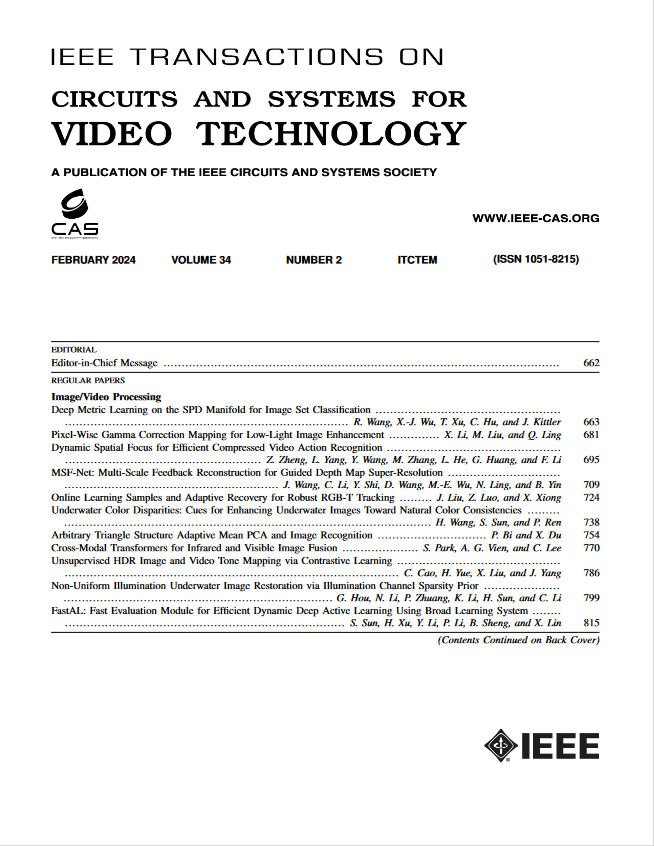ECINFusion: A Novel Explicit Channel-Wise Interaction Network for Unified Multi-Modal Medical Image Fusion
IF 8.3
1区 工程技术
Q1 ENGINEERING, ELECTRICAL & ELECTRONIC
IEEE Transactions on Circuits and Systems for Video Technology
Pub Date : 2024-12-12
DOI:10.1109/TCSVT.2024.3516705
引用次数: 0
Abstract
Multi-modal medical image fusion enhance the representation, aggregation and comprehension of functional and structural information, improving accuracy and efficiency for subsequent analysis. However, lacking explicit cross channel modeling and interaction among modalities results in the loss of details and artifacts. To this end, we propose a novelECINFusion:一种用于统一多模态医学图像融合的新型显式通道交互网络
多模态医学图像融合增强了功能和结构信息的表达、聚合和理解,提高了后续分析的准确性和效率。然而,缺乏明确的跨通道建模和模态之间的交互会导致细节和伪影的丢失。为此,我们提出了一种新的用于统一多模态医学图像融合的显式通道交互网络,即ECINFusion。ECINFusion包含两个组件:多尺度自适应特征建模(MAFM)和显式通道交互机制(ECIM)。MAFM利用多尺度自适应并行卷积和变压器来实现全局上下文感知特征表示。ECIM利用设计的多头通道注意机制,在通道维度上进行显式建模,实现跨模态交互。此外,我们引入了一种新的自适应l -范数损失,保留了细粒度的细节。实验表明,ECINFusion在不同指标的各种医疗融合子任务中优于最先进的方法。此外,扩展实验表明,该方法在不同的融合任务中具有良好的泛化性。简而言之,所提出的显式通道交互机制为多模态交互提供了新的见解。
本文章由计算机程序翻译,如有差异,请以英文原文为准。
求助全文
约1分钟内获得全文
求助全文
来源期刊
CiteScore
13.80
自引率
27.40%
发文量
660
审稿时长
5 months
期刊介绍:
The IEEE Transactions on Circuits and Systems for Video Technology (TCSVT) is dedicated to covering all aspects of video technologies from a circuits and systems perspective. We encourage submissions of general, theoretical, and application-oriented papers related to image and video acquisition, representation, presentation, and display. Additionally, we welcome contributions in areas such as processing, filtering, and transforms; analysis and synthesis; learning and understanding; compression, transmission, communication, and networking; as well as storage, retrieval, indexing, and search. Furthermore, papers focusing on hardware and software design and implementation are highly valued. Join us in advancing the field of video technology through innovative research and insights.

 求助内容:
求助内容: 应助结果提醒方式:
应助结果提醒方式:


